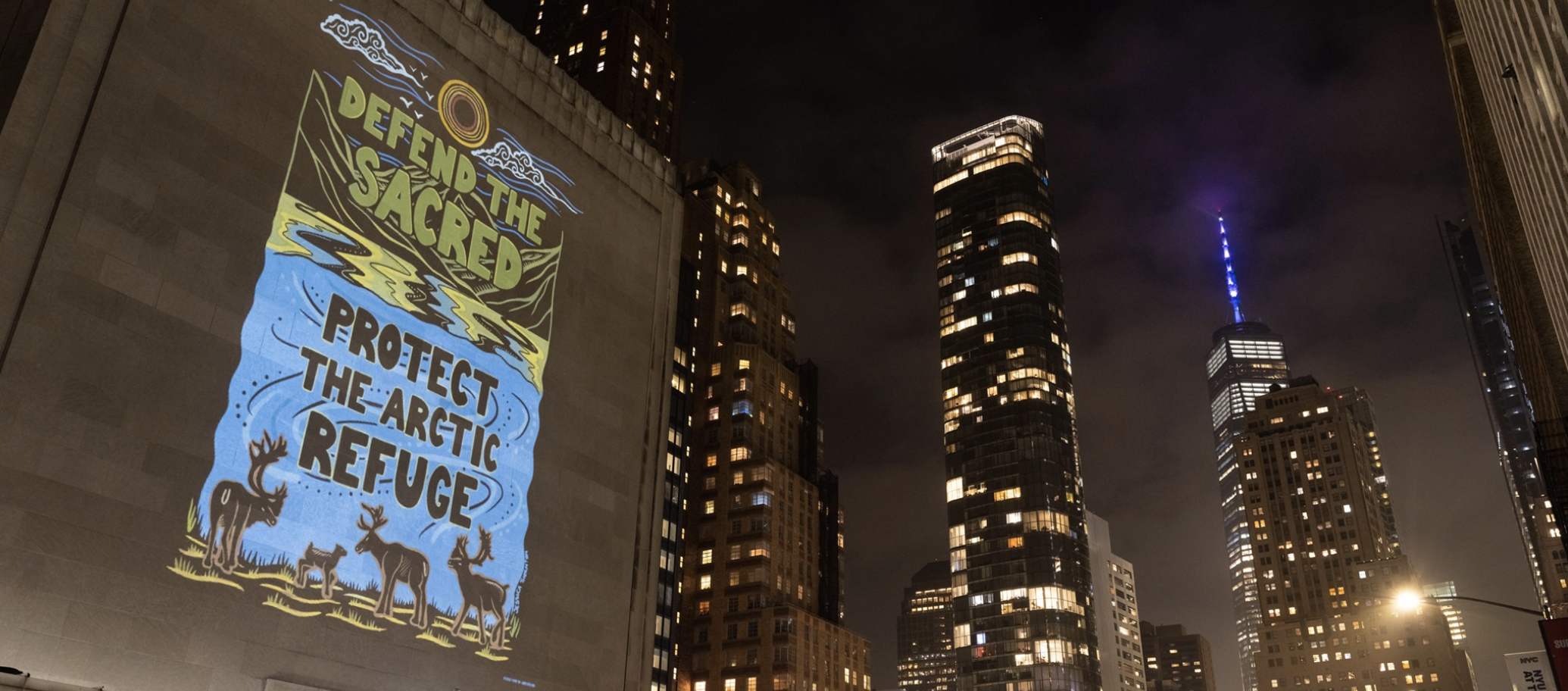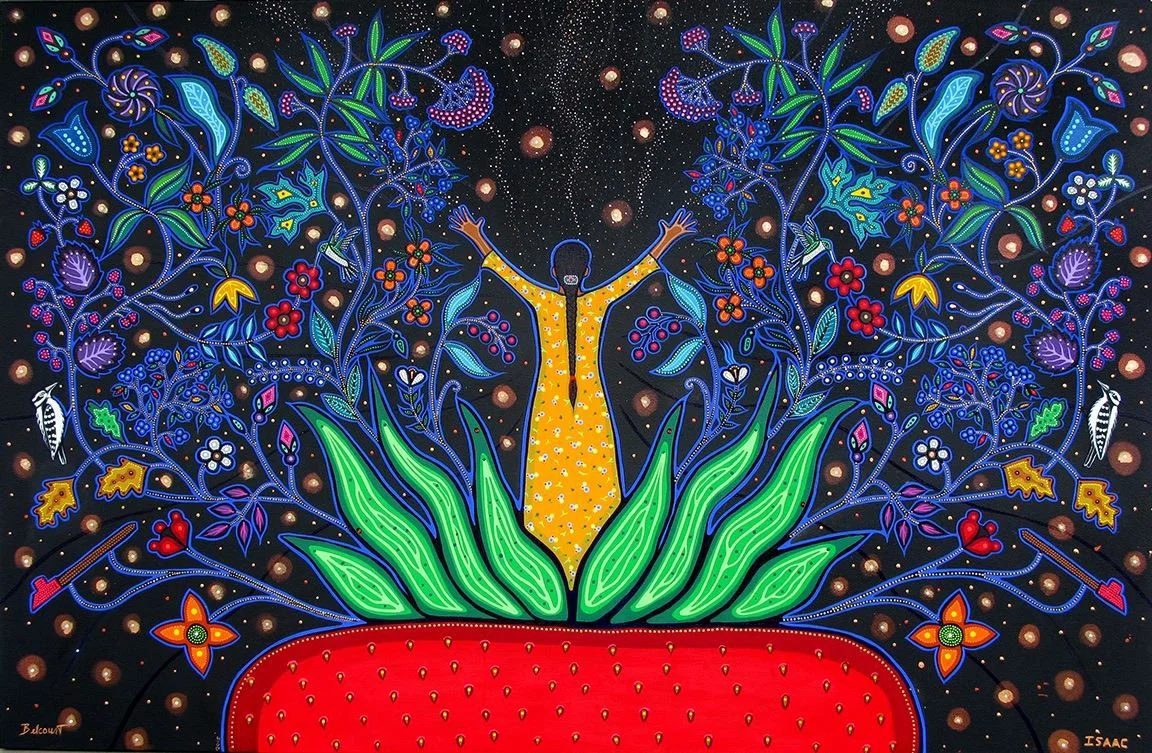
Native Movement Blog
A Time for Dancing: The 2024 Alaska Native Filmmakers Intensive 2024
Photo by: Maka Monture Paki
July 15, 2024 | Written By: Maka Monture Paki and Enei Begaye
“Native professional filmmakers teaching emerging Native filmmakers, filming Native storytellers – this feels like a real Native Movement!” Those were the words of Maddy Alvanna after spending a couple hours with her dance group at the 2024 Alaska Native Filmmakers Intensive.
April in Sitnasuak (Nome) Alaska was still full of snow and high winds, yet the second Alaska Native Filmmakers Intensive, hosted by Native Movement and Always Indigenous Media, was not deterred. The challenges of getting to rural Alaska in April were real, yet 15 student filmmakers, 5 Indigenous teachers, and 3 support staff were able to be at the week-long in-person intensive. The learning started well before that week, however, with 5 two-hour online zoom sessions every week leading up to the Nome in-person session.
Participants enhanced their filmmaking skills – delving into camera, audio, lighting, and editing techniques. Participants learned from Indigenous film professionals to foster mentor relationships within the industry. Training on narrative justice and photography was also provided. The footage is now going through a post-production process and screenings will be planned in the future.
“A powerful part to me was that the intensive underscored the critical importance of Indigenous narrative sovereignty, recognizing it as fundamental to preserving cultural heritage, reclaiming Indigenous voices, and challenging dominant narratives that often overlook or misrepresent Indigenous experiences.”
Our teachers brought a diverse range of skills and knowledge to the intensive, covering critical theory, creative direction, cinematography, sound, visual style, photography, storytelling, and more. Each one contributed uniquely to the Alaska Native filmmakers participating in the program.
This included:
Princess Johnson: Expertise: Critical and creative theory in filmmaking.
Alex Sallee: Expertise: Direction, sound, visual style.
Robert Hunter III: Expertise: Cinematography, camera build.
Razelle Benally: Expertise: Direction, perspective, and story development.
Jenny Irene Miller: Expertise: Photography and photography theory.
Rachel Edwardson: Expertise: Preparatory session and pre-production.
Photo by: Maka Monture Paki
Departing from conventional narratives, the final film will center on the drum's heartbeat as a symbol of resilience and unity. Amidst all that has happened in the community of Nome in the aftermath of Typhoon Merbok, in the community of Nome, the rhythm of the drum emerges as a guiding force, driving the community forward.
The role rotation system developed on set allowed students to gain practical experience in each of these essential filmmaking roles. This hands-on approach not only built technical skills but also fosters a well-rounded understanding of the collaborative nature of filmmaking. It's a great way for aspiring filmmakers to discover their strengths and interests within the industry. The students got to try out a different roles with including:
Assistant Camera:
As assistant camera operators, students would have assisted with camera setup, focusing, an operating the camera under the guidance of experienced instructors.
Supporting Talent:
There opportunities to work as supporting talent, collecting media releases and ensuring honorarium, and understanding how directors and crew interact with performers.
Directing:
Students had the opportunity to take on the role of a director, learning how to guide the overall vision of the film, work with actors, and make creative decisions.
Lighting:
They also practiced lighting techniques, which are crucial for setting the mood, highlighting subjects, and creating atmosphere in scenes.
Photo by: Maka Monture Paki
PARTICIPANTS ALSO RECEIVED:
A monetary stipend
Connections to experts in media-making
Travel, housing, food costs covered during the in-person session
Access to quality filmmaking equipment
WHAT PARTICIPANTS LEARNED:
Production and filmmaking tools to continue with telling our own stories from our own perspectives as Indigenous peoples.
Six weeks of pre-session that focused on narrative justice and Story development
Cinematic video camera setup and operations
Production set microphone setups and operations
Cinematic lighting setups and operations.
Video editing review tools
Career development and networking
A special thanks to instructors: Alex Sallee, Princess Johnson, Robert Hunter III, Razelle Benally, Jenny Irene Miller, and Rachel Edwardson. Quyana to our local partners, Kunaq Tahbone and the Katirvik Cultural Center, and the Community members from the community of Nome.
Photo by: Rodney Evans
What’s Missing from #MeToo and #TimesUp: One Indigenous Woman’s Perspective
Collaborative artwork by Christi Belcourt and Isaac Murdoch
Written By Princess Daazhraii Johnson
As I have watched the national dialogue unfold around sexual harassment and sexual violence, I can’t help but take notice of the lack of tie in to a much larger picture: namely, how men have abused their power to dominate and inflict violence upon not only women (and women of color in particular), but our Mother Earth. And they absolutely are related.
The roots of colonization and patriarchy in the Americas, included the strategy of stealing lands from Indigenous peoples, inflicting violence and domination over women, and further exploiting those lands for monetary gain. But this is not some distant past — it is happening at an alarming rate today. Both the land, water, and Indigenous women have been ‘othered’ and devalued in our society. Native American women are 2.5 times more likely to experience sexual assault and rape than any other ethnic group and the unsolved cases of Murdered & Missing Indigenous Women (#MMIW) are staggering. Extractive industries play a major role in this violence and I encourage you to visit www.landbodydefense.org for a report and toolkit on how to support these resistance efforts. Another resource on MMIW community-led work is at It Starts With Us.
This patriarchal worldview of how we relate to Mother Earth and to the non-human is so toxic that academics are referring to it as a new epoch — the Anthropocene. Under a patriarchal, colonialist mindset we find ourselves consuming and polluting the natural resources of our Mother Earth at a rate that is exasperating climate change and threatening life on this planet. Yes, TIME. IS. UP. Time is up for unjust patriarchal systems. Period.
It was empowering to see the Time’s Up Movement intentionally elevate the voices of women of color, immigrant women, and lesbian, bisexual, and transgender women at the Golden Globes — including having Suquamish Tribal Member, Calina Lawrence, speak out on MMIW.
The creator of the #MeToo movement, Tarana Burke, had this to say: “Sexual violence knows no race, class or gender, but the response to sexual violence absolutely does,” she told TIME last fall. “Until we change that, any advancement that we make in addressing this issue is going to be scarred by the fact that it wasn’t across the board.”
Let us include the voice of our Mother Earth in this dialogue — because as I write this our oceans and lands are being polluted by oil — look here (if you dare) for the most recent catastrophe in the East China Sea. As we seek social justice we must seek environmental justice. The Trump Administration has opened up places like the Arctic National Wildlife Refuge to oil drilling and all of our coastal communities are once again threatened by offshore oil development.
Business as usual isn’t working for the world, so we must change it all from the ground up. The challenge before us is not insurmountable, but we cannot build movements on superficial or extractive relationships. We must do the hard work of taking into consideration our various backgrounds and experiences and we must educate ourselves as much as possible as we come together to organize and remind ourselves it’s okay to feel uncomfortable and misunderstandings are bound to happen but it is how we react to those challenges that give us the possibility of building greater unity. Ask first how can we be of service? There are so many grassroots organizations that are doing meaningful work and there’s so much we can do — volunteer, uplift marginalized voices, donate our time and/or money to these organizations, and by all means play an active role in creating a better relationship with one another and with all life on Mother Earth!
Artwork by Erin Marie Konsmo







